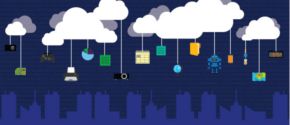Governments worldwide embracing IoT

As the world population grows and more people move to urban areas, governments around the globe face a new wave of challenges from more crime, to greater demand for government services, to increased pressure on natural resources. Moreover, government leaders must address these issues at a time when budgets are constrained and many agencies continue to work in silos.
By connecting the people, processes, and assets already at work in government, the Internet of Things (IoT) can help governments tackle their most pressing problems, transforming urban areas into smart cities prepared to handle large-scale urbanization. In fact, governments around the globe are already turning to IoT to revamp their critical functions, and it’s just the beginning. Over the next five years, total services spending on IoT is expected to more than triple from today’s $69.5 billion to $263 billion by 2020, according to Gartner.
In recent months, we’ve seen tremendous excitement about IoT, and the momentum continues to grow. Here are three examples of cities driving operational efficiency, improving citizen services, and keeping citizens safe using this technology:
- City of Breda – The City of Breda in the southern Netherlands joined with Microsoft partner ireckon to develop an IoT solution that links the physical sensors of its water and sewage plants. By connecting these systems, the city now receives real-time data about water flow and asset management, which is helping it to optimize pumping levels, decrease wasted power consumption, and streamline operations. By leveraging IoT, the city has achieved greater operational efficiency by identifying trends that drive fast, data-driven decisions.
- City of Helsinki – Helsinki’s city-owned bus system, Helsingin Bussiliikenne Oy (HelB), has been using sensors to collect and analyze detailed data to improve its citizen services. By working with Microsoft partner CGI, the city installed sensors on all of its buses. HelB now collects and analyzes fuel usage and other data for each driver, route, and vehicle, helping it to improve quality and cut costs. Specifically, the bus system has reduced fuel costs by 5 percent, increased customer satisfaction by 7 percent, and improved driver efficiency and safety.
- City of Oakland – The Oakland Police Department (OPD) is capturing video from 600 body-worn cameras and testing the management of this video footage using a cloud storage platform developed by Microsoft partner VIEVU. The platform, which is compliant with the FBI’s Criminal Justice Information Services (CJIS) standard for data security, is helping the OPD store and manage vast amounts of video in the cloud. Using the platform, the police department can easily search for and review specific videos. The platform includes many other benefits such as the use of digital signatures to verify authenticity when video is needed in court. By equipping police officers with body-worn cameras and analyzing this information, the OPD can assess and improve officer behavior, protecting its police from liability. The department also has saved hours of manual IT work.
These are just a few of the ways in which IoT is reshaping our urban environments. IoT gives governments the detailed data they need to improve every aspect of their operations. When combined with advanced analytics, the vast amount of data that IoT generates leads to powerful insights that transform government and dramatically improve quality of life. To learn more, please see the Microsoft Internet of Things website.




